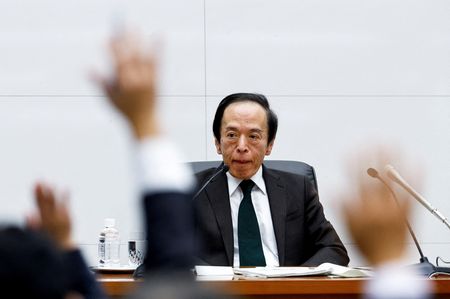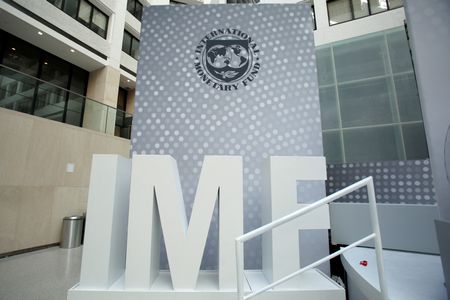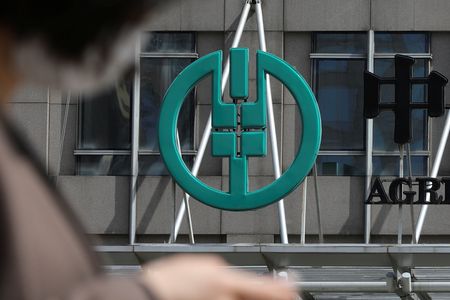By Leika Kihara
TOKYO (Reuters) – The Bank of Japan is shifting to a more discretionary approach in setting policy, with less emphasis on inflation, sources said, as the central bank maps its monetary path following the historic decision to end a radical stimulus programme in March.
With monetary settings seen on hold, market players are focusing on the BOJ’s fresh quarterly growth and price projections due at its April 25-26 policy meeting, for hints on how soon it may hike rates again.
While the central bank is expected to project inflation to stay around its 2% target through early 2027, such forecasts alone won’t serve as strong hints of a near-term rate hike, say three sources familiar with its thinking.
“Various data must be scrutinised, not just the inflation outlook,” one of the sources said, pointing to the importance of other indicators such as consumption, wages and the broader economy.
BOJ officials, including governor Kazuo Ueda, have said the focus would be on whether wage increases will broaden, and prod firms to hike prices not just for goods but services.
The BOJ ended eight years of negative rates and other remnants of its unorthodox policy last month, making a historic shift away from its focus on reflating growth with decades of massive monetary stimulus.
Many market players expect the BOJ to hike rates again this year with bets split between the chance of action in July, or sometime in the October-December quarter.
In the days after ending negative rates in March, Ueda said the central bank would revert to a “normal” monetary policy that lets various data guide the future rate hike path.
“It’s dependent on data,” Ueda told a newspaper interview published on April 5, when asked whether the BOJ could raise rates this year. “We’ll adjust interest rates according to the distance towards sustainably and stably hitting 2% inflation.”
The remarks suggest the BOJ could hike rates regardless of its inflation forecasts, as long as it becomes more convinced than before that Japan will sustainably hit its price goal.
Such a discretionary approach may require market players to scrutinise subtle changes in the way the BOJ describes the economy and inflation, for hints on its policy moves.
Ueda’s new approach also heightens the importance of upcoming data, particularly those on wages and consumption.
Consumption has recently been weak on rising living costs and slumping auto sales, raising the risk of an economic contraction in the first quarter.
A rebound in consumption – likely a prerequisites for another rate hike – could happen later this year as wage hikes, summer bonus payments and scheduled government cash payouts around June give households more purchasing power, analysts say.
“Given Ueda’s data-dependent stance, the BOJ probably wants to confirm that growth will pick up in the second quarter,” said Mari Iwashita, chief market economist at Daiwa Securities.
“If so, it’s hard to say enough data would be available at the time of the BOJ’s July meeting” to hike rates, she said.
Japan’s April-June gross domestic product (GDP) data will be released on Aug. 15, weeks after the BOJ’s July 30-31 meeting.
Under current forecasts made in January, the BOJ expects inflation excluding fresh food and fuel to hit 1.9% in both fiscal 2024 and 2025. Reflecting prospects for sustained wage growth, the board may revise up the forecasts, and project inflation to stay around 2% through fiscal 2026, analysts say.
(Reporting by Leika Kihara; Editing by Shri Navaratnam)











